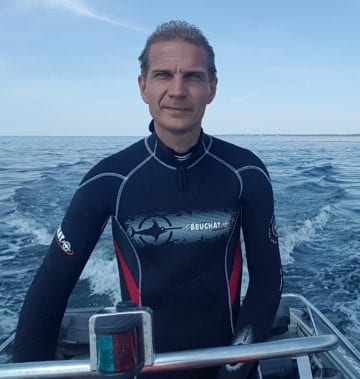Profitable mussel farms can clean up the Baltic Sea – just a dream or the real deal?


Sander Loite,
Senior Specialist,
Estonian Marine Institute,
University of Tartu,
Estonia
Jonne Kotta,
Research Professor,
Estonian Marine Institute,
University of Tartu,
Estonia
What is suffocating the Baltic Sea
Eutrophication — caused by excessive amount of nitrogen and phosphorus deposited into waterbodies — is the biggest environmental threat in the Baltic Sea. These nutrients literally over-fertilize the water body, resulting in massive algal blooms, reduced biodiversity, increased dead zones, and impeded ecosystem functions and services. Over 40 years of international efforts to reduce external nutrient loads have failed to solve the eutrophication problem. Despite significant reduction in external loads, the total phosphorus concentration in Baltic Sea waters continues to increase due to legacy phosphorus, which is previously deposited phosphorus released from seabed sediments. Future climate change is expected to enhance this nutrient release.
There is still hope
The failure to control Baltic Sea eutrophication through external measures has called for supplementary in-situ (internal) methods to lower nutrient concentrations in the water column. Farming native blue mussel represents a vast yet untapped potential for eutrophication mitigation. Farmed blue mussels need no additional nutrients for effective growth. Instead, they feed on water microalgae and the positive effect of filtration by mussels on water quality is immediate. Importantly, subsequent harvesting of farmed mussels removes a significant amount of nutrients from the marine environment and thereby constitutes a sustainable, low-impact, circular and potentially cost-effective measure for eutrophication control. In addition to reducing eutrophication, mussel shells consist of mineralized carbon and mussel farming is a means to permanently removing carbon dioxide from the air, thus helping us to reach greenhouse gas targets. Preliminary research has shown that the predicted total area of farms needed to achieve nutrient reduction targets is attainable under the current maritime spatial planning environment in the Baltic Sea. Nonetheless, the actual sea space for mussel farms should be allocated carefully to avoid unacceptable environmental impacts or conflicts with other uses. The use of appropriate farming technology and harvesting, which is designed for the smaller and slower growing Baltic Sea mussels, provides remarkable production rates, cost-effectiveness, and also better nutrient content in the yield.
Benefits
Applying relevant farming methods for the blue mussel is a profitable and sustainable way to remove nitrogen and phosphorus from the Baltic Sea and to capture excess atmospheric carbon. Mussel farming not only provides a tool for nutrient mitigation, but also contributes to the social and economic sustainability of rural areas. Furthermore, farms are seen as a restoration measure to supplement natural mussel reefs lost to anthropogenic impacts.
When available in a sufficiently large amount, mussels can provide a new sustainable protein resource for animal feed and the food industry or serve as a biological alternative to chemical fertilizers. Mussel meal is a good raw material and feed ingredient with no detriment to the growth and health of chickens. Sustainably produced blue mussels have a growing market because of their expanding field of application in different industries. In addition to animal feed and human consumption, a range of valorization options exist for mussel meat and shells. Mussels are known to be a reserve of valuable compounds such as bioactive proteins, minerals, pigments, enzymes etc. This leads to a solid potential to use these components to produce high value food supplements, biocosmetics, and so on.
Next steps
We need more data on the large-scale ecosystem effects of mussel farming as well as advances in the technical aspects of mussel farming and use. While additional research is desirable and is likely to take place, particularly if there are further innovation calls or programmes at the EU level, other factors, such as regulation, play a role in how fast these developments can proceed. We still lack appropriate support to cover for the ecosystem services provided by mussel farms. This means that mussel farming should be legally accepted as an important nutrient mitigation measure in the Baltic Sea region as soon as possible. Along with this acceptance, there is a need to develop and agree on a certification scheme using indicators based on standardized monitoring data. A system in which mussels are produced, converted into a value-added product, and sold profitably on the market, will attract the interest of investors, contribute to innovative blue growth, and promote the reduction of nutrients in the Baltic Sea.
Expert article 2896
> Back to Baltic Rim Economies 1/2021
To receive the Baltic Rim Economies review free of charge, you may register to the mailing list.
The review is published 4-6 times a year.
